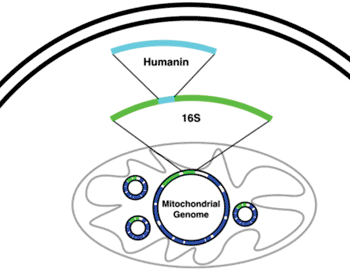Humanin Touted as Potential Diabetes Drug
By LabMedica International staff writers
Posted on 17 Dec 2013
A recent paper described the mode of action of the human peptide humanin on insulin secretion and suggested a potential role for humanin and its analogs in the treatment of diabetes.Posted on 17 Dec 2013
Humanin is a 21 or 24 amino acid peptide that is encoded in the mitochondrial genome by the 16S ribosomal RNA gene, MT-RNR2. Since its discovery in 2001, humanin has been shown to have a myriad of neuroprotective and cytoprotective effects. Studies in cells and rodents have found that administration of humanin or humanin derivatives increased survival and/or physiological parameters in models of Alzheimer's disease, Huntington’s disease, prion disease, and stroke. In addition, humanin has been shown to protect against oxidative stress, atherosclerotic plaque formation, and heart attack. Metabolic effects have also been demonstrated, and humanin helped improve survival of pancreatic beta cells, which may help with type I diabetes, and increased insulin sensitivity, which may help with type II diabetes.

Image: Diagram of the humanin gene and its localization within the 16S gene within the mitochondrial genome (Photo courtesy of Wikimedia Commons).
In the current study, investigators at the Albert Einstein College of Medicine (New York, NY, USA) tested the potent humanin analogue HNGF6A in various animal and cellular models to examine the acute effects of humanin on insulin secretion and to identify potential mechanisms through which they were mediated.
The investigators measured insulin secretion in rats and mice and in in-vitro models based on pancreatic islets cell cultures and cultured mouse beta-cell lines. They reported in the December 2013 issue of the FASEB Journal that Sprague-Dawley rats that received HNGF6A required a significantly higher glucose infusion rate and demonstrated higher insulin levels during hyperglycemic clamps compared to saline controls. In vitro, compared to scrambled peptide controls, HNGF6A increased glucose-stimulated insulin secretion (GSIS) in isolated islets from both normal and diabetic mice as well as in beta cells. Effects of HNGF6A on GSIS were dose dependent, K-ATP channel independent, and associated with enhanced glucose metabolism. Inhibition of beta-cell glucose metabolism blocked humanin-induced increase in insulin secretion.
These findings demonstrated that HNGF6A increased GSIS in whole animals, from isolated islets, and from cells in culture, which suggests a direct effect on the beta cell. The glucose-dependent effects on insulin secretion along with the established effects on insulin action point to the potential for humanin and its analogs in the treatment of diabetes.
"Diabetes is a major disease that is expected to affect more than 500 million people in the next two decades," said senior author Dr. Radhika Muzumdar, associate professor of endocrinology and geriatrics at the Albert Einstein College of Medicine. "Humanin could be a potential weapon in our arsenal in the fight against this global problem."
Related Links:
Albert Einstein College of Medicine














